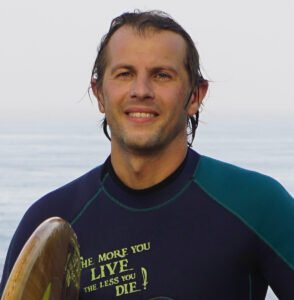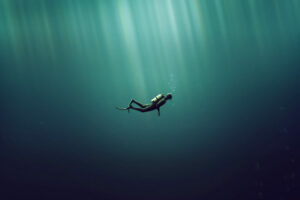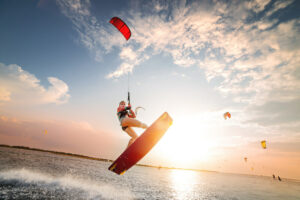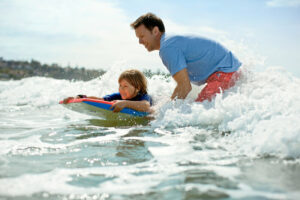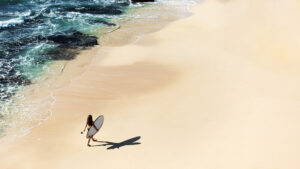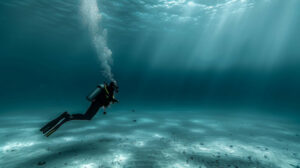Scuba diving is the underwater activity of breathing air from a self-contained underwater breathing apparatus, or scuba. There are two ways to get certified to dive. One way is by taking a class, and the other way is by doing it yourself.
The first step to getting certified is signing up for a class that teaches you the basics of scuba diving. The next step would be to take an open water certification course, which will teach you how to dive in open water with a buddy and how to use your equipment properly. After taking these classes, you will be able to go on your own dives with a little bit more confidence and knowledge about what you’re doing!
Diving is the best way to see the underwater world, but as you see, it requires some preparation. This article will help you prepare and dive safely.
How to dive when swimming?
The position and movement of the body is a key factor in diving. There are precise instructions that will help you to get into the water well and then to move forward smoothly and without problems. With this simple guide, you can already get an overview:
Before getting into the water
Before getting into the water, you will find yourself onto the starting blocks. You will need to place your feet side by side, shoulder width apart. You can also put one foot in front of the other, a position which is called “track start”.
As a rule of thumb, your main foot should be in front to give you maximum of propulsion. Always make sure that your back foot is also aligned with your hips, because this provides you with a streamlined entry when jumping into the water. Most important is to be balanced. Grab the top of the block on which you are standing and place your hands on the sides of both feet.
Before you push off and jump into the water, make sure your head is best in a neutral position and aligned with your spine. This will help you avoid common swimming injuries. When you hear the command, “On your marks,” tense the muscles in your legs and back and stay alert. At signal shot, push off with both feet. Your weight should shift forward as you tilt forward. Don’t forget: Raise your head and pull your arms back at the same time!
Make sure your feet are together and bring your arms forward. Focus on the point where you want to dip. Arms should now be stretched above your head, chin pulled inward.
Immersion in the water
Dive in with your hands first. For optimal immersion, your arms and feet should enter the water at the same point as if you were jumping through a hoop.
How to dive when scuba diving?
Diving is a sport that requires a lot of preparation to start. There are many aspects that need to be taken into account, such as the training and certification, equipment, and the location.
How to prepare for scuba diving
You should make sure that you are certified to dive before diving. You should also make sure that you’re fit to dive before diving. The first step is to get a certification for scuba diving. The certification will help you find the right course for your level of experience and help you find a dive buddy who is certified as well.
Make sure that you are fit for diving by taking a medical checkup and getting enough rest before the dive. The next step is to prepare yourself mentally and physically for the dive by researching about the area beforehand, making any necessary preparations, and reviewing safety guidelines.
Scuba Certification: Step-by-step
Scuba diving is a great way to explore the underwater world. It opens up a whole new world of adventure and discovery. Scuba diving certification is the first step to experiencing this life-changing activity. The process of getting your scuba certification is broken down into three main steps: learning, training, and testing.
Learning: The first step in becoming a certified diver is learning about what it entails and how to do it correctly. There are many different ways you can learn about scuba diving, including taking a course in person or online, reading books on the subject, or watching videos on YouTube or other media outlets. You should make sure that you have learned all the basics before moving on to step two: training.
Training: Once you have learned all the basics about scuba diving, it’s time for training! Training includes practicing skills such as using your equipment and swimming underwater with an instructor present.
Basic scuba diving equipment
Scuba diving is a great way to explore the underwater world. It is also a great way to get in shape because you are constantly exercising. However, before you can begin scuba diving, there are some basic things that you need to know.
The first thing that you will need is a mask and snorkel. This will allow you to breathe while underwater and see what’s going on around you. The next thing that you will is a SCUBA (Self Contained Underwater Breathing Apparatus): This set usually consists of a scuba tank, a BCD and a regulator that allow divers to breathe underwater.
You also might get dive computers: they are important for safety (for example, to know how much air you have left or how deep you are). Weights will also be necessary because without enough weight, most divers would not be able to sink below the surface. And last, a wetsuit or dry suit that keeps the diver warm, safe and comfortable.
How to dive when scuba diving: Step by step
Diving underwater might be something you need to get used to at first. The following steps will guide you through the basics of how to dive when scuba diving;
– Start with a deep breath and then exhale all the air in your lungs before submerging. This will help prevent nitrogen build-up in your bloodstream, which can lead to decompression sickness or “the bends”.
– Stay close to the surface of the water and use a slow, steady swimming motion as you descend. This will help conserve your energy for later.
– Use your fins for propulsion when you are near the surface of the water, but keep them tucked close to your body when you are submerged underwater, so they don’t slow you down or cause drag on your body.
– When you reach about 15 feet below sea level, stop descending and start ascending back up at a slow pace. This is called “breathing up” and it takes about two minutes.
Tips during and after your scuba diving trip
During Your Scuba Diving Trip
If you are a beginner scuba diver, it is important to know that you should never hold your breath. Breathe normally and make sure to equalize frequently as you descend. Stay aware of what is happening around you and always keep an eye on your dive buddy.
After Your Scuba Diving Trip
After you have finished your scuba diving trip, you will need to stow all your gear away on the boat. Your guide and buddy should debrief with you and make sure that you are feeling well. If you feel strange, let others know, so they can help. You should not fly until the following day because of the nitrogen bubbles in your blood.
How to Dive When Snorkeling?
This section is about how to dive when snorkeling. Snorkeling is a popular activity that many people enjoy on their vacations. Most people don’t know that it’s actually possible to dive while snorkeling.
Tips on How to Start Snorkeling
If you are a beginner, it is important to make sure that you have the proper equipment. You should use a mask and snorkel or a full-face mask and snorkel. You should also use fins and your hands to propel yourself through the water. Once you have reached your destination, it is best to hold your breath and dive under the water. When you’re under the surface, learn how to clear pressure from your ears by blocking one ear at a time, then quickly releasing so that the air can escape. Finally, return to the surface by kicking your feet up behind you to break the surface tension of water on top of your head.
How does a Snorkel Work?
A snorkel is a tube that is used to breathe while swimming. It has a mouthpiece at one end and a valve at the other end. The snorkel tube is made of rubber or silicone and is fitted with a mouthpiece that can be used to breathe through, as well as an air valve to release water from the tube.
The snorkel tube is placed in the mouth and pushed up towards the nose so that it fits securely over the bridge of the nose and seals around it, forming a watertight seal.
Types of Snorkels
Wet Snorkels
Wet snorkels are the most common type of snorkel. They are made from rubber and have a hollow mouthpiece that is filled with water. The water is then drawn through the snorkel and out through a tube that connects to the surface. The wet snorkel is typically used by scuba divers, but can also be used by free-divers or swimmers who are not going too deep.
Semi-Dry Snorkels
Semi-dry snorkels work similarly to wet snorkels, but they have a valve which allows you to release air as needed while diving so you don’t need to keep your head at the surface of the water. They also have a purge valve which allows you to spit out any water that enters your mouth while diving. Semi-dry snorkels are usually used by free-divers or swimmers who are not going too deep.
Dry Snorkels
Dry Snorkels are very popular because they do not require any water to be used. They are also very easy to use and this is why they have become a favorite of many snorkelers.
The dry snorkel is a tube that is connected to the mouthpiece. It has been designed in such a way that it does not come into contact with the user’s mouth, which means that it does not need water for operation.
How to Dive Down When Snorkeling
- Snorkel Dive Stage 1
- The first stage of snorkeling is the dive down. It can be a little tricky to get the right balance and to dive straight down, so it’s important to kick hard and keep your body horizontal.
- Snorkel Dive Stage 2
- You’ll need to use a flutter kick with your arms hanging down by your side. This will help you move forward while looking at all the beautiful fish that are swimming around.
- Snorkel Dive Stage 3
- When you are ready, lean forward into the water from the waist down so that your arms and upper body are now facing down. Your upper body and legs are now at a 90-degree angle.
- Snorkel Dive Stage 4
- Try to be are completely straight, but pointing down as if you were trying to do a handstand. Your legs should be heavy, pushing your upper body down. This vertical positioning will make the biggest difference to the fluidity of your dive. If you prefer, you can also swim with your arms down, and once your feet are below the surface you can thrust with your legs.
How to Stay Safe When Snorkeling
Snorkeling is a great activity for the whole family. It is a type of swimming that uses a snorkel to breathe and see underwater. If you want to stay safe when snorkeling, there are some things you can do beforehand.
- Always go with a buddy and let someone know where you are going and when you expect to be back. That way, if something goes wrong, someone will know about it.
- In some places, it’s important to bring a surface marker so boats can spot you easily. There are models that act as floats and make it much more convenient to carry equipment or food and water.
- Keep looking up from tome to time to check where you are. Wind, current and sheer enjoyment can easily lose you track of where you are; make sure that you have enough energy to make it back.
- Wear a life jacket or PFD if you’re not used to being in the water. They’ll keep you safe and comfy, and allow you to save energy by swimming instead of treading water. It’ll also make the experience more enjoyable!
- Most likely, you’ll be snorkeling in a hot climate, and it’s tempting to wear your swimsuit. However, the chances of getting sunburn from being out in the sun for a while are very high. At the very least, you should wear a rash vest. These are like shirts that you wear in the water, with long sleeves that cover up to your wrists. You can get one at any well-stocked beach store.
- The best way to protect your skin is to wear a skin suit, which is like a thin wetsuit. Sun cream can be toxic for the environment, but covering up on the beach at least can allow you more protection. Board shorts are always a good idea too because a sunburned butt isn’t pretty!
Conclusion: Diving requires a little practice and caution in open waters
Diving is the best way to see the underwater world, but it requires some preparation. When jumping into the water as also while diving, your body’s position and movement will have a great impact on your performance and is crucial to get your diving certificate and practice before going on a scuba deep diving trip.
Another diving method for flat water dives is snorkeling. Snorkeling is less risky and can also allow the diver to dive a few meters underwater with the right snorkel. On the whole, however, it is important to equip yourself with the right equioment for both methods.

